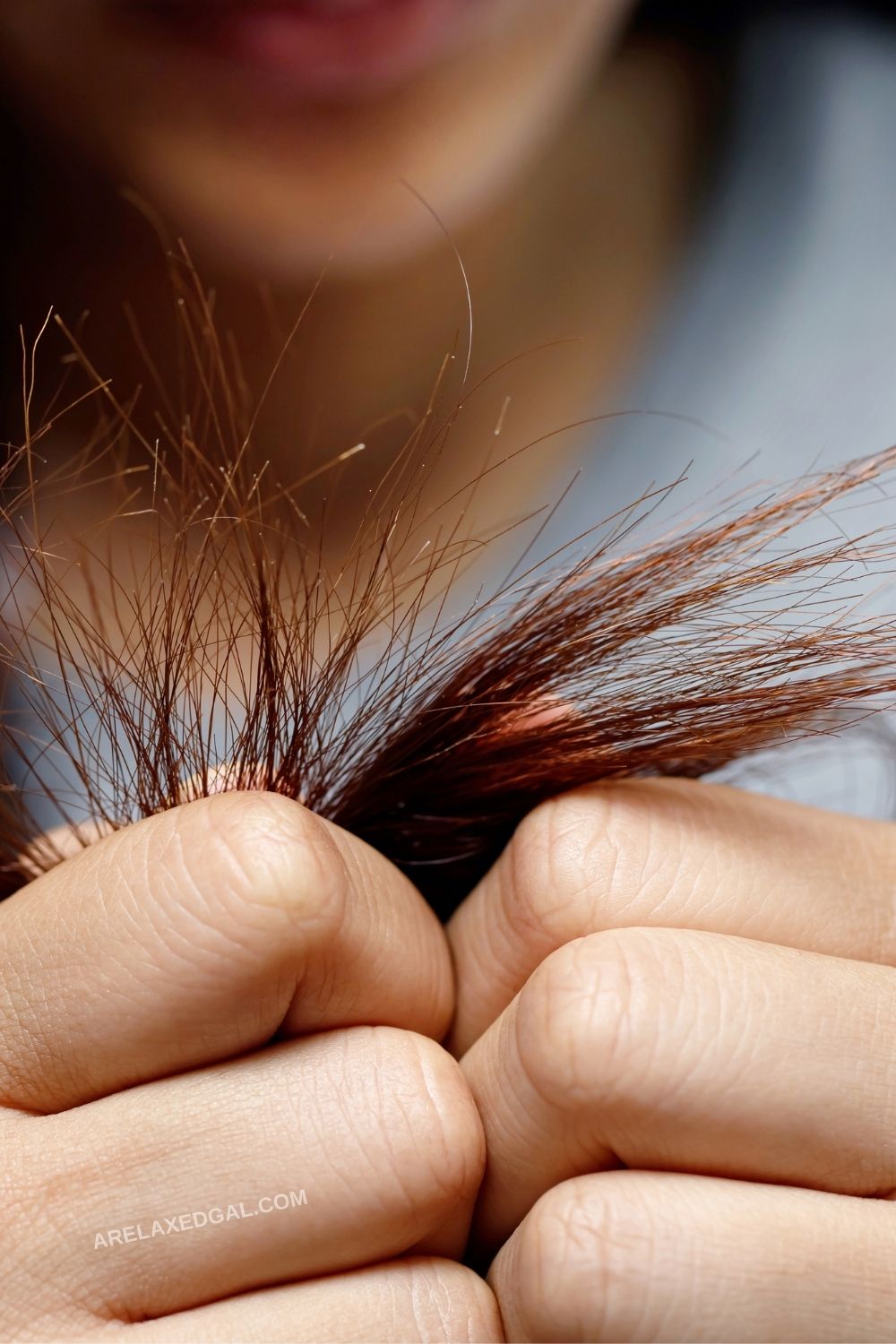Say Goodbye to Split Ends: A Comprehensive Guide to Healthy Hair
Split ends can be a frustrating and common hair problem that many of us face. In this comprehensive guide, we’ll explore what split ends are, what causes them, and how to prevent and treat them effectively. Whether you’re dealing with split ends now or want to avoid them in the future, this guide has you covered.
Split Ends
Defining Split Ends
Split ends, also known as trichoptilosis, occur when the hair shaft splits or frays into two or more parts at the tip. This often gives the hair a frizzy, damaged appearance. Split ends are a result of hair damage and can affect people of all hair types.
Causes of Split Ends
Understanding the causes of split ends is crucial for prevention. Common culprits include:
Heat Styling:
Excessive use of hot tools like straighteners and curling irons.
Chemical Treatments:
Treatments like bleaching, coloring, and perming.
Lack of Hair Care:
Insufficient moisturizing and neglecting regular trims.
Symptoms of Split Ends
Visible Signs
Identifying splinting never chepali ends is relatively straightforward. Look for hair strands with splits or forks at the ends. These split hairs can range from a centimeter to several centimeters in length, depending on the severity.
Texture and Feel
When you run your fingers down the length of your hair, split ends may feel rough or uneven compared to healthy hair. You might notice a difference in texture between the ends and the rest of the strand.
The Impact of Split Ends
Effects on Hair Health
Split ends not only affect the appearance of your hair but also its overall health. When left untreated, split ends can lead to further damage, including breakage, frizz, and loss of shine. This can make your hair look lackluster and less vibrant.
Emotional Impact
In addition to the physical effects, split ends can have an emotional impact. Many individuals feel self-conscious when they notice split ends, which can affect their confidence and self-esteem. It’s important to address split ends not only for the health of your hair but also for your well-being.

Prevention and Treatment
Preventive Measures
Preventing split ends begins with adopting healthy hair care practices. Consider the following tips:
Reduce Heat Styling:
Limit the use of hot tools and use heat protectants when styling.
Regular Trims:
Schedule regular hair trims to remove split ends and promote healthy growth.
Gentle Hair Handling:
Be gentle when detangling and brushing your hair to avoid breakage.
Use Quality Hair Products:
Invest in shampoos, conditioners, and serums designed to prevent split ends.
Treatment Options
If you already have split ends, there are steps you can take to address them:
Trimming:
Visit a professional stylist to have split ends trimmed.
Deep Conditioning:
Use deep conditioning treatments to moisturize and repair damaged hair.
Leave-In Conditioners:
Apply leave-in conditioners to keep hair hydrated and reduce further damage.
Natural Remedies for Split Ends
DIY Solutions
For those who prefer natural remedies, several ingredients can help nourish and repair split ends. Consider trying:
Coconut Oil:
Apply warm coconut oil to the ends of your hair, leave it in for a few hours, and then wash it out.
Avocado Mask:
Create a mask using ripe avocado and apply it to your hair. Leave it on for about 30 minutes before rinsing.
Egg Yolk:
Mix egg yolk with olive oil and apply it to your hair as a nourishing treatment.
Proper Hair Care Routine
Healthy Hair Habits
Maintaining a healthy hair care routine is essential for preventing split ends and promoting overall hair health. Consider incorporating the following habits into your daily or weekly routine:
Gentle Washing:
Use a mild shampoo and conditioner suitable for your hair type. Avoid aggressive scrubbing that can damage hair.
Regular Conditioning:
Use a quality conditioner to keep hair moisturized and manageable.
Avoid Overwashing:
Washing your hair too frequently can strip it of natural oils. Aim for every other day or as needed.
Detangling with Care:
Use a wide-toothed comb or a brush designed for detangling. Start from the tips and work your way up.
Frequently Asked Questions (FAQs) About Split Ends Hair
1: Can split ends be repaired?
Yes, split ends can be temporarily repaired with products like serums and conditioners, but the best way to address them is by trimming.
2: How often should I trim my hair to prevent split ends?
It’s recommended to trim your hair every 6 to 8 weeks to prevent split ends and maintain healthy hair growth.
3: Are there specific shampoos or conditioners for split ends?
Yes, many hair care products are designed to target and prevent split ends. Look for those with moisturizing and repairing properties.
4: Can split ends lead to hair loss?
While split ends themselves do not directly cause hair loss if left untreated, they can lead to further damage and breakage, which may result in thinner-looking hair.
5: Can I prevent split ends if I have very long hair?
Long hair is more prone to split ends, but proper care, including regular trims and deep conditioning, can help prevent and manage them.
Conclusion
Promoting Hair Health In conclusion, split ends are a common hair issue, but they are manageable and preventable with the right care. By adopting healthy hair habits, maintaining a proper hair care routine, and addressing split ends promptly, you can enjoy the benefits of beautiful, healthy hair.




